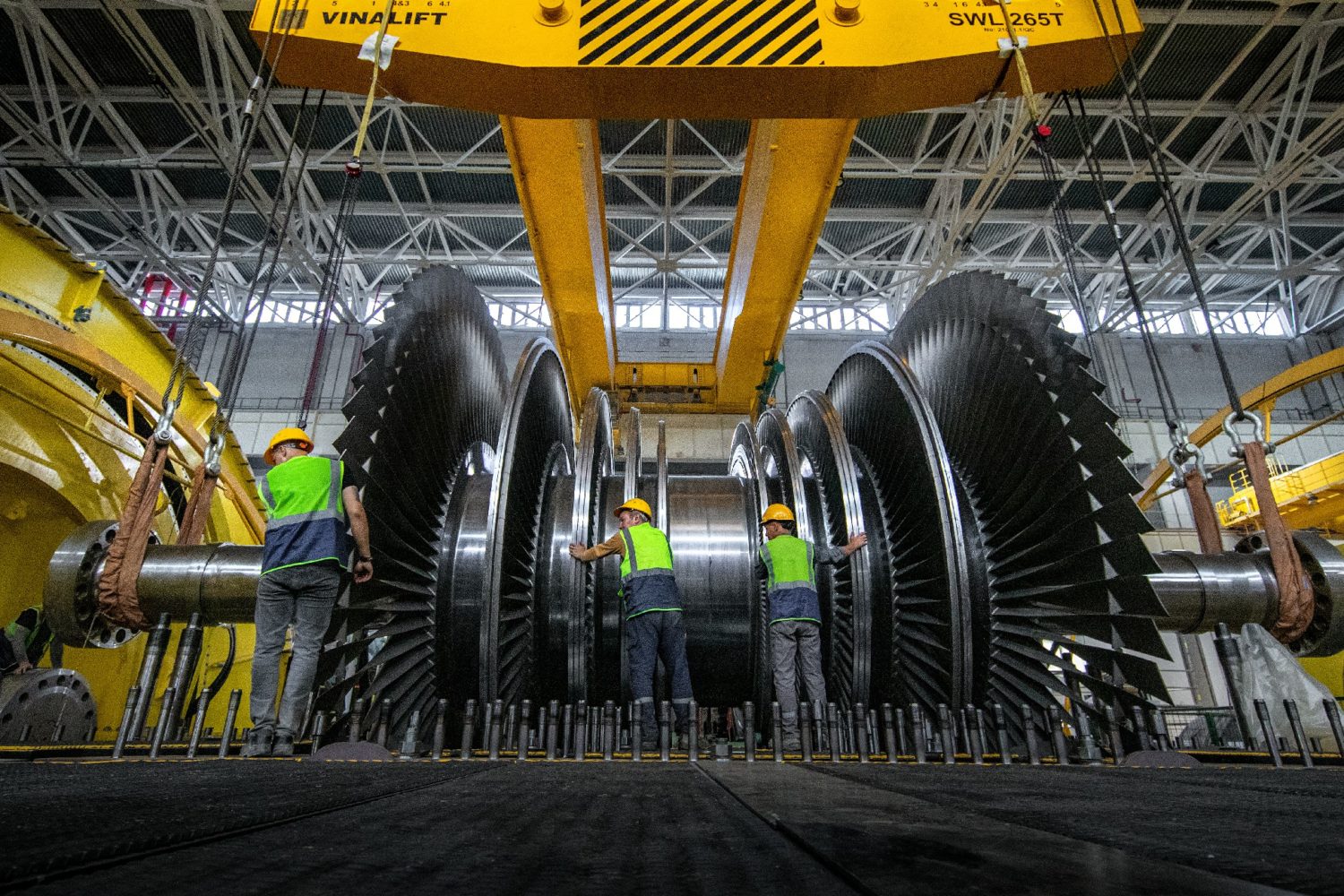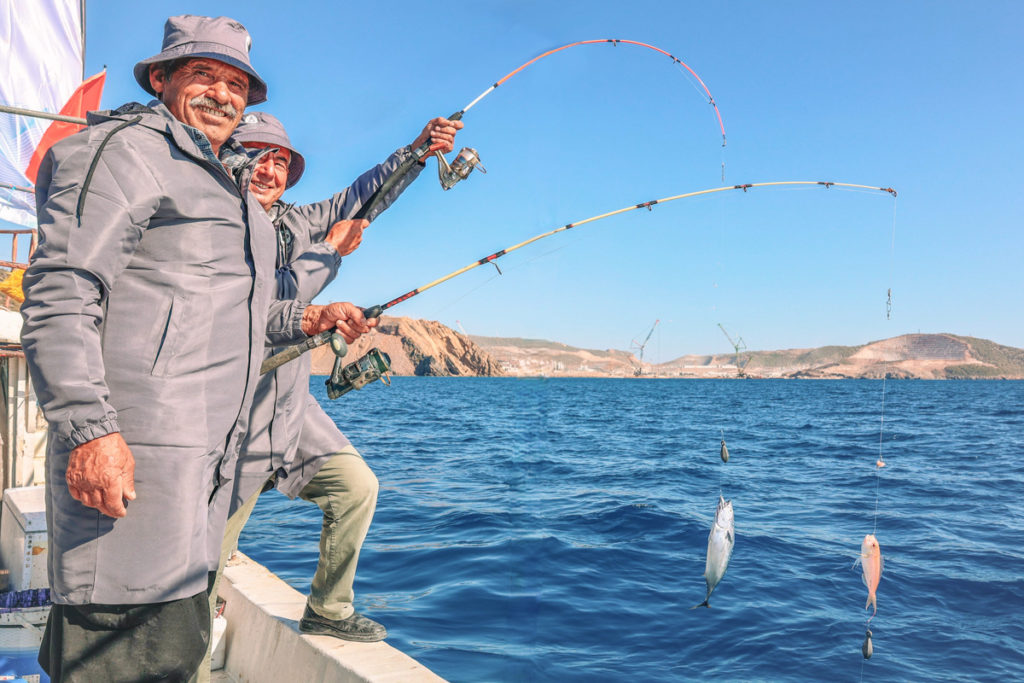
Powerful, Safe, and Efficient
back to contentsFull-scale pre-commissioning operations are underway at Akkuyu Unit 1. Its systems and equipment are being gradually made ready for operation and checked thoroughly for compliance with the design parameters. Works at the other units are continuing as scheduled.
In early November, workers finished concreting the outer containment dome on the reactor building of the first power unit. This operation was divided into four stages and took 104 days. The outer containment shell is an essential safety element of the reactor unit. Its reinforced concrete structure will safely protect the reactor from external impacts.
In late October, workers finished installing a rotor into the turbine stator in the turbine building of Unit 1. The rotor is a large-size piece of equipment weighing 245 tonnes, so the installation required using the main overhead crane of the turbine building.
“Thanks to the concerted efforts of our workers and engineers, we have successfully carried out the complex and critical operation of inserting the rotor into the stator, mounting it onto the bearings and setting it up. The rotor installation will allow all auxiliary systems to be connected to the stator. This will also allow workers to proceed with aligning the turbine and generator shafts,” said Sergey Butskikh, CEO at Akkuyu Nuclear.
With the rotor put in place, the turbine assembly process moves into the final stage. First, the shafts of the turbine and generator rotors are connected into one line and aligned precisely. The turbine unit is then ready for the jacking gear installation and a subsequent series of pre-commissioning tests.
Also in late October, a low-pressure heater (LPH) was delivered to the Akkuyu NPP construction site. This device improves efficiency of the reactor heat utilization by heating the main condensate to, and maintaining, the required temperature. Before being delivered to Turkey, the LPH made a long journey, having traveled from the manufacturing site in Podolsk near Moscow to the port of Saint Petersburg and then across three seas and one ocean to Akkuyu.
The Akkuyu project is in the focus of attention of the Turkish leadership. In late October, a delegation of deputies from the Grand National Assembly of Turkey (TBMM) visited the construction site of the nuclear power plant. The members of Turkish Parliament were taken to the site’s highest point offering a panoramic view on the power units under construction. Then they inspected a storage area for large-size equipment, such as components of turbines and reactors for Akkuyu Units 2–4. The visit was followed by a meeting at which the delegates were given a detailed briefing on the progress of the construction project.
“The Akkuyu NPP is one of the largest and most ambitious projects, perhaps, even worldwide. It will make a substantial contribution to the sustainability of the national energy system since energy is a key factor in the development of any country. I am looking forward to all four power units of the Akkuyu NPP with a total capacity of 4,800 MW soon being commissioned and becoming the key to the stability of Turkey’s energy sector,” Yusuf Ziya Yılmaz, who headed the TBMM delegation, commented on the visit.
Beyond construction
Since construction of the Akkuyu NPP started, Rosatom has launched a great number of educational and social initiatives in the host communities. One of the most outstanding is the Sails of Spirit initiative that includes a sailing regatta, an environmental action, and other events. Three yachts took part in this year’s regatta. As usual, Akkuyu Nuclear employees were on their crews, which consisted of people with and without disabilities. The winner was a team representing the Kurs Sailing Club from Mersin and comprising handicapped people from this Turkish city. While the yachts were competing, master classes were held on shore. The event ended with an evening concert.
 “Rosatom is an active organizer and supporter of the initiatives aimed at the development of human potential. For five years in a row, Akkuyu Nuclear employees have been gladly participating in the activities of the Sails of Spirit mission. This unparalleled initiative gives people an opportunity to get support, overcome themselves and the circumstances, and develop new abilities,” Sergey Butskikh said.
“Rosatom is an active organizer and supporter of the initiatives aimed at the development of human potential. For five years in a row, Akkuyu Nuclear employees have been gladly participating in the activities of the Sails of Spirit mission. This unparalleled initiative gives people an opportunity to get support, overcome themselves and the circumstances, and develop new abilities,” Sergey Butskikh said.
Another traditional event, an angling tournament, was held in early November near the village of Yeşilovacik and close to the Akkuyu NPP site.
Sixteen amateur fishermen representing districts of the Mersin province took part in the tournament. They competed in two categories, a team competition for the largest catch and an individual competition for the largest fish. In total, the contestants caught about 42 kilograms of fish. After weighing the catch and determining the winners, a dosimetry expert from Akkuyu Nuclear measured radiation from the fish caught. The measurements showed that the radiation did not exceed natural background levels.
“The test results once again confirmed that the fish caught near the Akkuyu NPP site may be consumed. This means that the nuclear power plant is safe for the marine ecosystems,” said Abdullah Aslaner, head of the Silifke district administration.
“Our experts have been monitoring environmental parameters in the 30 kilometer zone around the Akkuyu NPP site for several years. We regularly take samples of air, soil, plants, and also fish,” Sergey Butskikh pointed out.
Not in Turkey alone
Another construction project similar to Akkuyu in scale is Egypt’s first nuclear power plant, El Dabaa. Rosatom is simultaneously building all of its four VVER 1200 reactor units. In early November, a molten core catcher for El Dabaa Unit 4 arrived at the construction site. In early October and fully on schedule, workers proceeded with the installation of a core catcher at Unit 3. The installation was assisted with a heavy Zoomlion ZCC 32000 crane having a lifting capacity of 2,000 tonnes.
In September, erection of an inner containment shell started at the reactor building of Unit 2. The inner containment shell consists of six tiers, the first of which includes 12 pre-assembled structural sections. These sections were manufactured right at the El Dabaa construction yard.




